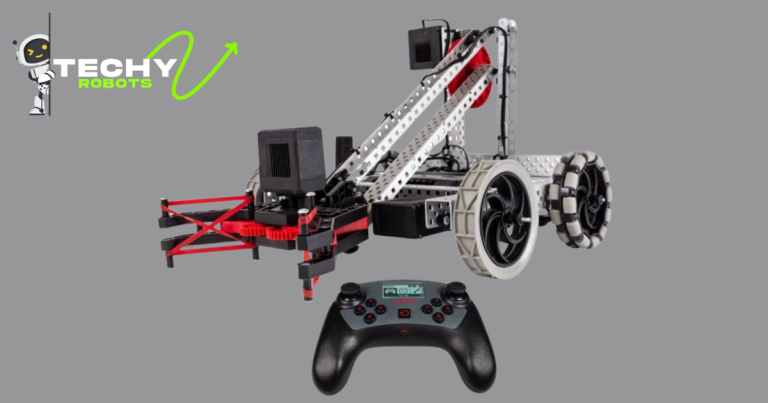The NVIDIA NVS 300 is a flexible and reliable portrait card designed on the whole for commercial enterprise environments.
It is constructed to supply outstanding performance for multi-show setups, making it perfect for programs including financial buying and selling flooring, digital signage, and other expert visualization duties.
This guide blog the crucial aspects of the NVS 300, including driver help, setup instructions, compatibility with Windows 10, an assessment with the NVS 310, and tips for excellent monitors to pair with the NVS 300.
NVS 300 Driver Support
1: Driver Availability
NVIDIA provides drivers for the NVS 300 through its authentic website. These drivers are critical for ensuring that the photograph card operates efficaciously and takes full advantage of its functions. The drivers are available for numerous operating systems, including Windows, Linux, and FreeBSD.
2: Downloading Drivers
- Visit the NVIDIA driver download page.
- Select “Quadro” as the product type.
- Choose “NVS Series” beneath the product series.
- Select “NVS 300” underneath the product.
- Choose your operating machine and preferred language.
- Click “Search” and download the correct driving force.
3: Installation of Drivers
- After downloading the motive force, comply with these steps to install it:
- Open the downloaded motive force record.
- Follow the on-display instructions, accepting the license settlement.
- You can choose either an “Express” or “Custom” setup. The “Express” alternative is recommended for the maximum number of customers.
- Complete the installation process by following the prompts and restarting your laptop if vital.
How to Install the NVS 300?
1: Physical Installation
- Power off your laptop and unplug it from the energy supply.
- Open your computer case. Refer to your laptop’s manual for precise instructions.
2: Remove Existing Card (if applicable)
- If you’re replacing an existing image card, unscrew and gently eliminate it from the PCI Express slot.
3: Install the NVS 300
- Insert the NVS 300 into an available PCI Express slot. Ensure it is firmly seated.
- Secure the card to the case of the usage of the screw from the previous card or a new one provided with the card.
4: Close the Case
- Replace the aspect panel of your computer case and steady it.
5: Connect to Monitor
- Attach the reveal cable to the output port of the NVS 300. Use adapters if important.
6: Power On and Driver Installation
- Power to your PC. Install the drivers precisely inside the preceding segment.
NVS 300 Compatibility with Windows 10
1: Official Support
The NVIDIA NVS 300 is well suited to Windows 10. NVIDIA has launched drivers that support Windows 10, ensuring that the snapshot card functions properly on this running device.
2: Driver Installation on Windows 10
- Download the Windows 10 driving force from the NVIDIA website as defined in advance.
- Run the installer and follow the on-screen commands.
- Ensure that your system is hooked up to the internet during the setup for the most suitable effects.
- Restart your PC after installation to finish the manner.
Common Issues and Solutions
- Display Issues:
If you revel in show issues, ensure that the display is successfully connected and that the motive force set up becomes a hit.
- Performance Problems:
Check for any to-be-had Windows updates and make sure your system meets the minimum necessities for the NVS 300.
NVS 300 vs. NVS 310 Comparison
- Performance NVS 300:
The NVS 300 offers stable performance for multi-show setups, assisting up to 2 displays. It is designed with power performance in mind, making it suitable for lengthy-term use in professional environments.
- NVS 310:
The NVS 310 provides an overall performance increase over the NVS 300, with assistance for higher resolutions and better handling of several presentations. It supports up to two shows with progressed picture-processing talents.
Memory and Interface
- NVS 300:
Equipped with 512MB of DDR3 reminiscence and a 64-bit memory interface, the NVS 300 is enough for fundamental expert programs.
- NVS 310:
The NVS 310 has 1GB of DDR3 memory and a 64-bit memory interface, offering higher overall performance for more traumatic duties.
Display Support
- NVS 300:
Supports resolutions as much as 2560×1600 pixels.
- NVS 310:
Supports resolutions up to 3840×2160 pixels, presenting a clearer and greater specific display.
Power Consumption
- NVS 300:
Low electricity intake, with a maximum of 17.Five watts, making it fantastically power-green.
- NVS 310:
Slightly better electricity consumption at 19. Five watts, still maintaining the right energy efficiency.
Use Cases
- NVS 300:
It is ideal for less annoying multi-show setups consisting of workplace environments, financial trading floors, and digital signage.
- NVS 310:
It is perfect for extra annoying expert programs requiring better decisions and better overall performance.
Best Monitors for NVS 300
When selecting a monitor to pair with the NVS 300, keep in mind the following factors: resolution, connectivity alternatives, and common show fine. Here are some top guidelines:
1: Dell UltraSharp U2415
- Resolution: 1920×1200
- Size: 24 inches
- Connectivity: HDMI, DisplayPort, Mini DisplayPort, USB three.Zero
- Features: Excellent coloration accuracy, skinny bezels, adjustable stand.
2: ASUS ProArt PA248Q
- Resolution: 1920×1200
- Size: 24.1 inches
- Connectivity: DisplayPort, HDMI, DVI, VGA, USB three.Zero
- Features: Pre-calibrated for coloration accuracy, ergonomic stand, extensive viewing angles.
3: HP Z24n G2:
- Resolution: 1920×1200
- Size: 24 inches
- Connectivity: HDMI, DisplayPort, Mini DisplayPort, USB-C
- Features: Factory shade calibration, a couple of connectivity alternatives, and a 3-sided micro-area bezel.
Considerations
- Resolution: The NVS 300 supports up to 2560×1600, so choose a monitor that maximizes this capability.
- Ports: Ensure the screen has like-minded ports (HDMI, DisplayPort) for seamless connectivity.
- Usage: For professional use, shade accuracy and ergonomics are essential.
FAQs
What are the key functions of the NVS 300?
The NVS 300 features 512MB of DDR3 memory, which helps for twin shows with a resolution of 2560×1600 and a coffee strength consumption of 17.5 watts.
Can the NVS 300 handle gaming?
The NVS 300 is not designed for gaming. It is optimized for professional and business packages, consisting of multi-display setups and high-resolution outputs.
How do I update the drivers for the NVS 300?
Drivers may be updated by downloading the contemporary version from the NVIDIA website and following the setup commands furnished.
Is the NVS 300 like-minded with Linux?
Yes, the NVS 300 is well suited to Linux. NVIDIA offers drivers for various distributions, which can be downloaded from their reputable internet site.
What can I do if my NVS 300 isn’t showing efficiently?
Ensure that the monitor is successfully related and the drivers are properly established. Check for any to-be-had updates on your running system and Pix drivers.
Conclusion:
The NVIDIA NVS 300 is a strong answer for commercial enterprise environments requiring multi-display abilities and high-decision support.
With the right drivers and like-minded monitors, the overall performance of various expert programs is dependable.
Whether you are putting in place a buying and selling ground or a virtual signage device, the NVS 300 is a reliable desire.




